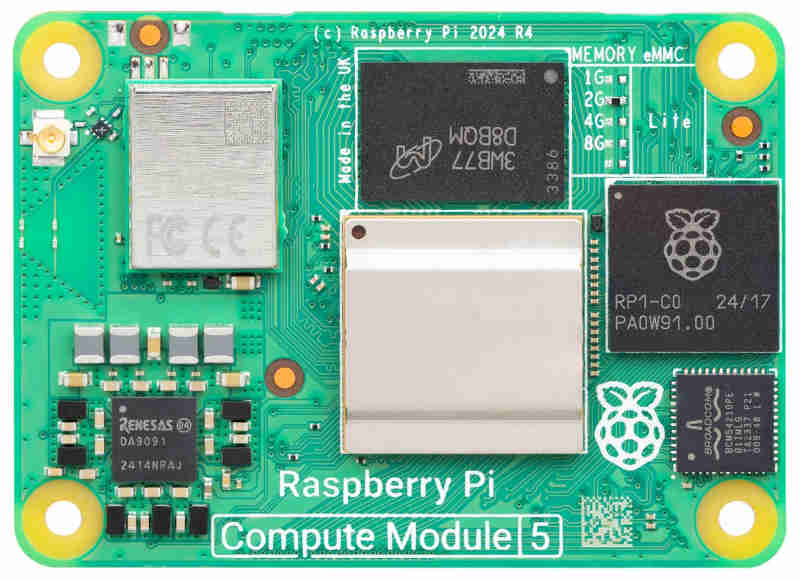| Raspberry Pi CM5 - Expensive And Undocumented |
| Written by Mike James | |||
| Wednesday, 27 November 2024 | |||
|
So the unexpected has happened - the Compute Module 5 has been launched. But it simply emphasises some problems with adopting the Pi as an IoT device.
Raspberry Pi has long been clear about its intentions to move into the industrial market. During the long chip shortage it was impossible for the average maker, experimenter, tinker, innovator or educator to buy a Pi. Most of the available stock went industrial customers and while this makes sense from the point of view of protecting jobs and companies it wasn't a good choice. It was like eating the seed-corn as most of the Pi's success is based on the goodwill and efforts of the open source community - Pi OS is a perfect example. Without it the Pi would be an unusable heap of silicon. Part of the reason that it could be adopted by the open source community was that it was well documented with only a few hidden secrets - a few proprietary binary blobs. With the introduction of the Pi 5, much of this changed. While it used a Broadcom BCM2712 as its processor, it introduced the RP1 as its southbridge. A southbridge is a chip that provides most of the external connections - GPIO, PWM, I2C and on. This is great as the RP1 is a derivative of the chip that drives the excellent Pico, but the documentation is still lacking. For example, the RP1 has onboard PIOs which are very valuable if you are planning to do some custom connections to the external world, but there is no documentation and the only help we have in using them is a comment that they aren't quite the same as the ones in the Pico. What has all this got to do with the CM5 that has just been announced? Well it too uses the RP1 and at the moment there still is no documentation for it. This might be excusable for the Pi 5 where which is not exclusively an IoT device - it's a desktop computer. But for the CM5 not to be extensively documented at a low level rules it out of consideration in any moderately low level IoT project. Of course, if you are an industrial customer then you can ask questions and get additional information. If you are joe public then you just have to wallow in your ignorance. The CM5 uses the RP1, but nothing much is made of it in the announcement. Its spec is without mention of said chip: Compute Module 5 gives you everything you love about Raspberry Pi 5, but in a smaller package:
It is available with 2GB, 4GB, or 8GB of LPDDR4X-4267 SDRAM, and with 16GB, 32GB, or 64GB of MLC eMMC non-volatile memory. 16GB SDRAM variants are expected to follow in 2025. The only clue that there might be an RP1 in there is the mention of the PCIe bus, but if you look at the picture of the printed circuit board there it is:
There is no doubt that the CM5 is faster and has more peripherals than the CM4, but you are mostly going to have to rely on the Linux drivers in Pi OS to make use of them. The presence of the RP1 also makes the CM5 more difficult to clone and so alternative sources of the board are going to be few and far between and probably non-existent, which is of course the big advantage to Raspberry Pi. Finally we have cost to consider. The CM5 is available in a wide range of configurations, but they are all around $10 more than the equivalent CM4. For an IoT device this is quite a price hike and may rule it out of some applications. One piece of good news is that the price of the I/O development board is reduced to around $20 compared to the $38 for the CM4 version. For IoT projects that need a small Linux computer the CM5 is a reasonable choice, but if you need to work at a lower-level then it is much less attractive and for the lone innovator it is almost a closed box.
More InformationCompute Module 5 on sale now from $45 Related ArticlesRaspberry Pi To Go Public - Are We Worried? Raspberry Pi Back In Stock - Well Almost To be informed about new articles on I Programmer, sign up for our weekly newsletter, subscribe to the RSS feed and follow us on Twitter, Facebook or Linkedin.
Comments
or email your comment to: comments@i-programmer.info |
|||
| Last Updated ( Wednesday, 27 November 2024 ) |




